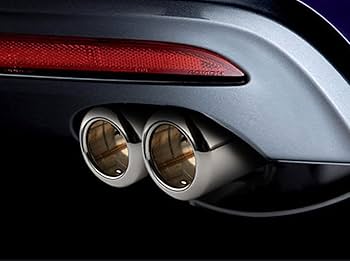"How Car Exhaust Systems Work: A Simple Breakdown By Infospherer "
A car’s exhaust system is a vital component of its overall functionality and environmental performance. While many people may only focus on the engine or transmission when thinking about car mechanics, the exhaust system plays a crucial role in ensuring the vehicle runs smoothly, efficiently, and safely. Understanding the basics of how it works, its components, and its importance can help you better maintain your vehicle and improve its longevity.
What is a Car Exhaust System?
The exhaust system of a vehicle is responsible for managing the gases produced by the engine’s combustion process. When a car engine burns fuel to produce power, it generates exhaust gases that must be safely expelled from the engine. These gases include carbon monoxide, nitrogen oxides, and other potentially harmful substances. The exhaust system channels these gases from the engine to the outside air, minimizing their impact on the vehicle and the environment.
Key Components of a Car Exhaust System :
Exhaust Manifold The exhaust manifold is the first component in the exhaust system. It’s bolted to the engine block and collects the exhaust gases from the engine’s cylinders. It is designed to guide these gases into the rest of the system. Often made of cast iron or stainless steel, the manifold must be able to withstand high temperatures and the corrosive nature of the gases.
Oxygen Sensors Modern cars are equipped with oxygen sensors located before and after the catalytic converter. These sensors monitor the amount of oxygen in the exhaust gases, helping the vehicle’s engine control unit (ECU) regulate the air-to-fuel ratio. A properly functioning oxygen sensor helps the engine run more efficiently, reduces emissions, and improves fuel economy.
Catalytic Converter One of the most important components for reducing emissions is the catalytic converter. This device uses a chemical reaction to convert harmful gases into less harmful substances. Specifically, it helps convert carbon monoxide into carbon dioxide and nitrogen oxides into nitrogen and oxygen. The catalytic converter is essential for meeting modern emission standards and is often legally required in many regions.
Resonator A resonator is typically located near the catalytic converter. Its primary function is to reduce the sound of the exhaust gases as they pass through the system. It works by canceling out certain sound frequencies produced by the engine, making the vehicle quieter and more pleasant to drive.
Muffler The muffler is the component that most people associate with the exhaust system. It further reduces the sound of the engine and exhaust gases. Mufflers are made of a series of chambers and perforated tubes that help dissipate sound waves. In addition to sound reduction, they also help improve the efficiency of the exhaust flow.
Exhaust Pipe The exhaust pipe is the final component of the exhaust system. It directs the treated gases from the engine out of the vehicle and into the atmosphere. Exhaust pipes can vary in size, shape, and material depending on the vehicle model, but they all serve the same basic purpose of expelling gases away from the engine and the vehicle.
How Does the Exhaust System Work?
The process begins when the engine burns fuel in its combustion chambers. The resulting exhaust gases are channeled through the exhaust manifold into the exhaust system. From there, the gases pass through the oxygen sensors, where their composition is monitored. They then enter the catalytic converter, where harmful pollutants are converted into less harmful compounds. Afterward, the gases pass through the resonator and muffler to reduce noise before being expelled through the exhaust pipe.
The entire system works in tandem to reduce the harmful effects of engine emissions, decrease noise pollution, and ensure the car operates efficiently.
Importance of the Exhaust System
Environmental Protection The exhaust system’s primary role is to reduce the vehicle’s environmental impact. The catalytic converter, in particular, helps minimize the release of harmful substances into the atmosphere, making it essential for meeting emission standards set by regulatory bodies.
Improved Fuel Efficiency A properly functioning exhaust system can improve a vehicle's fuel efficiency. For example, the oxygen sensors and the catalytic converter work together to optimize the engine’s air-to-fuel ratio, which can reduce fuel consumption.
Enhanced Engine Performance A well-maintained exhaust system ensures that exhaust gases are efficiently expelled, allowing the engine to run smoothly. Blockages or leaks in the system can lead to a decrease in engine power and overall performance.
Noise Reduction Noise pollution is a significant concern, and the muffler and resonator work to minimize the engine’s sound, making the driving experience quieter and more comfortable.
Conclusion :
The exhaust system may not always be in the spotlight when it comes to car maintenance, but it is an integral part of ensuring your vehicle operates efficiently and meets environmental standards. Regular maintenance, including checking for leaks or blockages and replacing damaged components like the oxygen sensors or catalytic converter, is essential to keep your exhaust system in good working condition. Understanding how it works and the role it plays in your car’s performance and emissions can help you appreciate its importance and take better care of your vehicles .












0 Comments